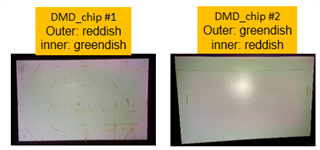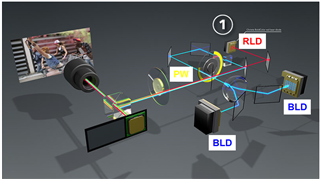Hello TI members,
The image below shows the same projector paired with two DMDs of the same model.
Why do DMDs of the same model exhibit different black screen performances?
We speculate that this is related to the oscillation angle of the DMD.
Does anyone have any ideas?



